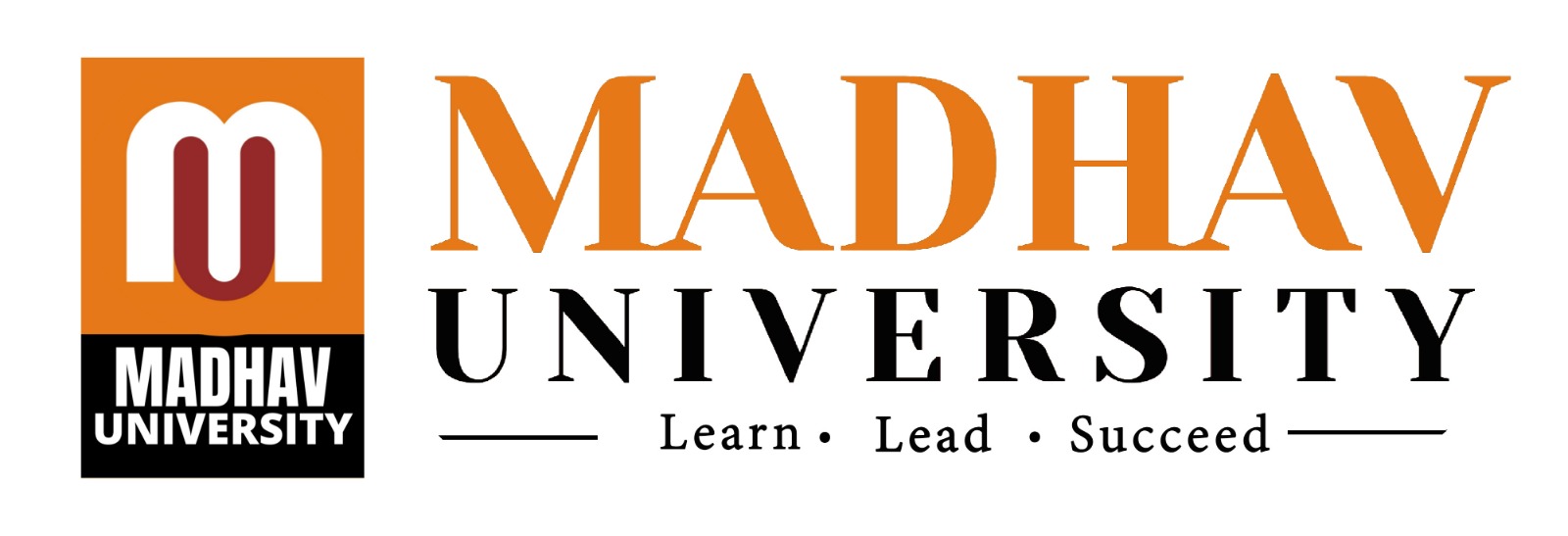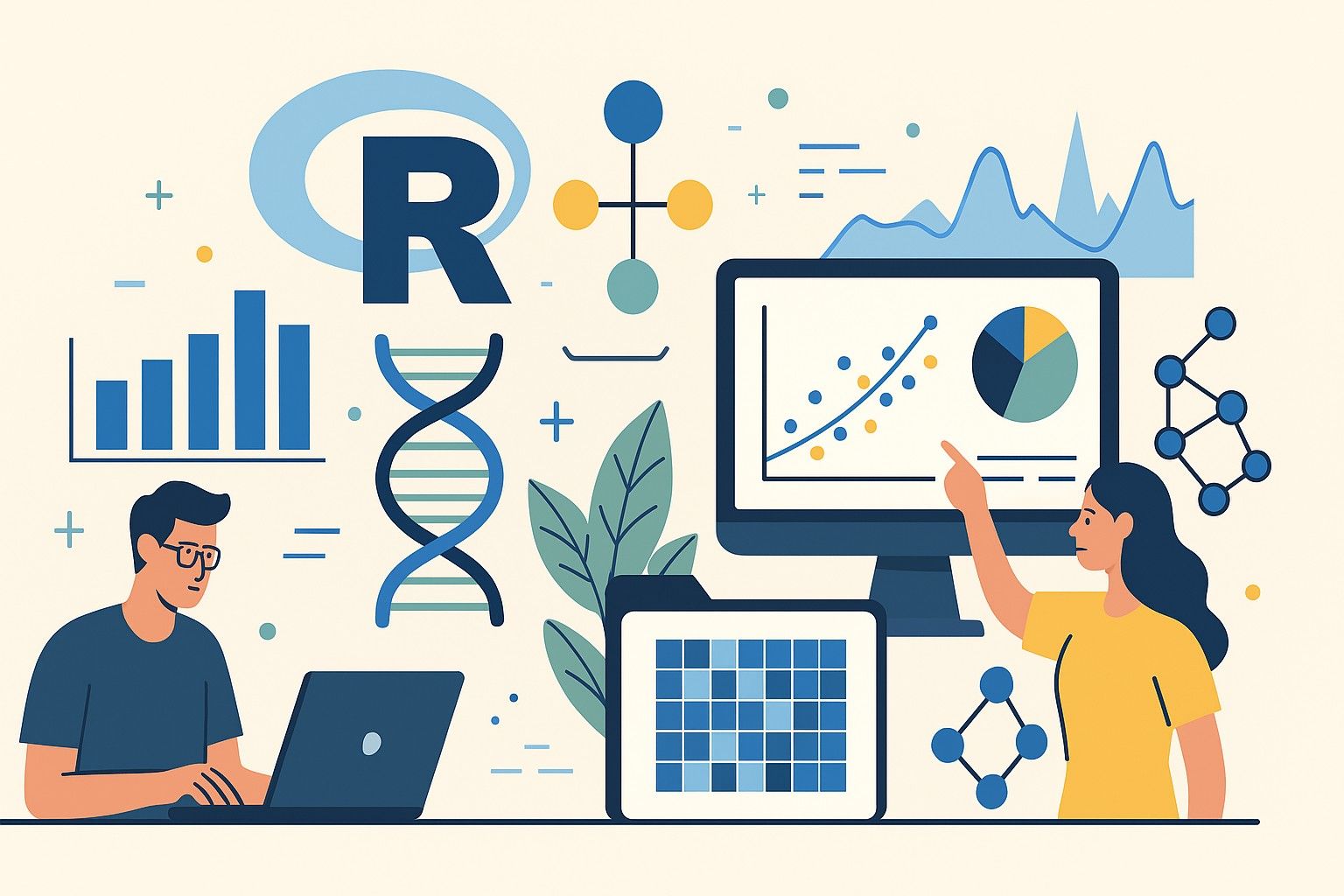Introduction
The advent of high-throughput technologies in biological research has ushered in the era of big data in the life sciences. Genomics, proteomics, transcriptomics, and metabolomics have generated vast amounts of biological data, presenting both unprecedented opportunities and formidable challenges in data analysis, interpretation, and visualization. At the intersection of computer science and biology, bioinformatics has emerged as a pivotal field that leverages computational methods to make sense of biological data. Among the myriad of tools available for bioinformatics, R and Bioconductor have risen as foundational platforms, empowering researchers with powerful statistical and graphical techniques.
This essay explores the significant role of R and Bioconductor in the domains of computer science and bioinformatics, highlighting their contributions, applications, and impact on research and innovation.
R, coupled with the Bioconductor project, is a powerful platform for bioinformatics data analysis. R is a statistical programming language, and Bioconductor provides a wide range of R packages, tools, and resources specifically designed for analyzing biological data. This combination is widely used for tasks like data import, preprocessing, statistical analysis, visualization, and more.
Here’s a more detailed breakdown:
R as the Foundation:
R is a free, open-source statistical computing environment, making it accessible and customizable for various bioinformatics tasks. It’s known for its flexibility and ability to be extended with user-developed packages.
Bioconductor as the Bioinformatics Toolkit:
Bioconductor is a project that focuses on bioinformatics and computational biology, offering a vast collection of R packages for handling various biological data formats and analysis techniques.
Key Capabilities:
Data Import and Preprocessing: Bioconductor packages handle various data formats, including microarray, proteomic, and flow cytometry data.
Statistical Analysis: R’s statistical capabilities, combined with Bioconductor’s packages, enable robust analysis of biological data.
Visualization: R and Bioconductor offer tools for creating informative visualizations of biological data, including graphs, networks, and other plots.
Genomic Data Analysis: Bioconductor includes packages specifically designed for analyzing genomic data, such as the GenomicRanges package, which provides tools for storing, manipulating, and analyzing genomic intervals.
Example Packages:
Biostrings: For working with DNA, RNA, and protein sequences.
GenomicRanges: For working with genomic intervals.
AnnotationDbi: For accessing and working with biological annotation data.
Learning and Community:
Bioconductor offers resources like tutorials, documentation, and a vibrant community for support and collaboration.
R: A Statistical Powerhouse
Origin and Evolution
R is an open-source programming language and software environment for statistical computing and graphics. It originated as an implementation of the S programming language developed at Bell Laboratories and was created by Ross Ihaka and Robert Gentleman in the early 1990s. Since its inception, R has become one of the most widely used languages for data analysis, machine learning, and statistical modeling, particularly in academia and research.
Core Features
- Statistical Analysis: R provides a comprehensive suite of statistical techniques including linear and nonlinear modeling, time-series analysis, classification, clustering, and hypothesis testing.
- Data Visualization: The graphical capabilities of R are robust, enabling the creation of high-quality plots and graphics through packages like ggplot2.
- Extensibility: The vast ecosystem of packages—over 20,000 on CRAN (Comprehensive R Archive Network)—allows for specialization in numerous fields including bioinformatics, finance, and machine learning.
- Reproducibility: With tools like RMarkdown and Shiny, R promotes reproducible research, allowing users to create dynamic documents, dashboards, and interactive applications.
Bioconductor: Bioinformatics with R
Introduction to Bioconductor
Bioconductor is an open-source project built on R that provides tools for the analysis and comprehension of high-throughput genomic data. It was initiated in 2001 by Robert Gentleman and others to harness the statistical power of R for analyzing biological data. Today, Bioconductor hosts over 2000 software packages, hundreds of annotation packages, and experiment data sets that facilitate genomic research.
Key Objectives
- Facilitate the analysis of high-throughput biological data, including gene expression, SNP data, and next-generation sequencing.
- Provide reproducible and interoperable tools that adhere to open science principles.
- Bridge the gap between biological questions and computational analysis.
R and Bioconductor in Bioinformatics
1. Genomic Data Analysis
One of the primary use cases of R and Bioconductor is the analysis of genomic data.
- Gene Expression Analysis: Packages like limma, edgeR, and DESeq2 allow researchers to identify differentially expressed genes from microarray and RNA-Seq data.
- Next-Generation Sequencing (NGS): Tools like GenomicRanges, Biostrings, and ShortRead help in aligning sequences, annotating features, and analyzing coverage.
- Variant Calling: VariantAnnotation and related packages assist in identifying SNPs and indels from whole genome and exome sequencing data.
These analyses are critical in understanding gene function, regulatory mechanisms, and disease pathways.
2. Data Integration and Annotation
Biological data is often heterogeneous, requiring integration from multiple sources. Bioconductor offers:
- Annotation Packages: These packages provide genome-wide annotations for model organisms (e.g., org.Hs.eg.db for humans).
- Databases Interfaces: Bioconductor allows querying of biological databases such as Ensembl, UCSC, and KEGG via packages like biomaRt and AnnotationHub.
3. Epigenomics and Transcriptomics
Epigenetic modifications and transcript variants play crucial roles in gene regulation.
- ChIP-Seq Analysis: csaw and DiffBind enable the identification of protein-DNA interaction regions.
- Alternative Splicing: Tools like DEXSeq and SGSeq help detect exon-level expression and splicing variants.
4. Single-Cell Genomics
With the rise of single-cell technologies, Bioconductor has evolved to meet the computational demands:
- Single-cell RNA-seq (scRNA-seq): Packages such as Seurat (interfaced with R) and SingleCellExperiment provide pipelines for preprocessing, normalization, clustering, and visualization.
- Trajectory Inference: Tools like monocle and slingshot allow for pseudo-time analysis and lineage reconstruction.
5. Visualization and Reporting
Visualization is crucial for interpreting results:
- Heatmaps and PCA: pheatmap, ComplexHeatmap, and factoextra help visualize clustering and dimensional reduction.
- Genome Browsers: Packages like Gviz create genome-level visualizations of sequence data.
- Interactive Reporting: RMarkdown and Shiny enable dynamic reports that enhance transparency and reproducibility.
Role in Computer Science
R and Bioconductor also intersect with broader domains of computer science:
1. Machine Learning and AI
R supports machine learning models through packages like caret, randomForest, and xgboost. These models are increasingly used in:
- Precision medicine to predict treatment outcomes.
- Biomarker discovery from high-dimensional biological data.
- Integrative modeling combining clinical and omics data.
Bioconductor further enhances this with biologically informed models, e.g., penalized regression on pathway data.
2. Big Data and Cloud Computing
As biological data scales, R is used in big data environments:
- Parallel Processing: Packages like BiocParallel and foreach allow distributed computations.
- Cloud Platforms: R is supported on AWS, Google Cloud, and Azure for scalable bioinformatics pipelines.
- Workflow Management: Bioconductor integrates with workflow languages like Nextflow and Snakemake.
3. Software Engineering
R and Bioconductor foster good software engineering practices:
- Version Control: Integration with Git and GitHub supports collaborative development.
- Package Development: Tools like devtools and roxygen2 streamline package creation.
- Testing and Documentation: testthat and pkgdown promote robust, well-documented code.
Use Cases and Applications
1. Cancer Genomics
R and Bioconductor are pivotal in The Cancer Genome Atlas (TCGA) and similar projects. Researchers use packages like TCGAbiolinks to download, process, and analyze multi-omics data to discover cancer subtypes and therapeutic targets.
2. Drug Discovery and Pharmacogenomics
- Connectivity Map (CMap) and LINCS data are analyzed using R to identify gene expression signatures of drugs.
- Pharmacogenomics datasets (e.g., GDSC, CCLE) are processed to understand genotype-drug response associations.
3. Metagenomics
Microbiome studies rely on packages like phyloseq to analyze microbial community composition and diversity.
4. Public Health and Epidemiology
R is used to analyze epidemiological data, model disease spread (e.g., during pandemics), and assess genetic risk factors in populations.
Educational and Community Impact
The R and Bioconductor community plays a vital role in education and training:
- Workshops and Courses: Annual Bioconductor conferences, online courses (e.g., Coursera, edX), and bootcamps train thousands of researchers.
- Open Science: Contributions from around the globe ensure that tools are peer-reviewed, well-documented, and freely available.
- Collaborative Research: Community-driven development fosters interdisciplinary collaborations between biologists, statisticians, and computer scientists.
Limitations and Challenges
Despite their strengths, R and Bioconductor face certain limitations:
- Performance: R can be memory-intensive and slower than languages like Python or C++ for certain tasks.
- Steep Learning Curve: The syntax and command-line nature may be challenging for biologists with limited programming background.
- Fragmentation: With thousands of packages, identifying the best-suited one for a task can be overwhelming.
However, active development and improved documentation are steadily addressing these issues.
Future Directions
The future of R and Bioconductor in computer science and bioinformatics is promising:
- AI Integration: Deep learning frameworks (e.g., TensorFlow, Keras) are being integrated into R, enabling sophisticated modeling.
- Multi-omics Analysis: New packages are emerging to handle simultaneous analysis of genomics, epigenomics, transcriptomics, and proteomics.
- Interactive Tools: Enhanced Shiny apps and R dashboards will make data analysis more accessible to non-programmers.
- Standardization: Ongoing efforts aim to improve interoperability and standardization of data formats and analysis workflows.
Conclusion
In the rapidly evolving fields of computer science and bioinformatics, R and Bioconductor have carved a niche as indispensable tools for statistical computing, data visualization, and reproducible research. Their extensive libraries, robust statistical frameworks, and active user community have empowered researchers to extract meaningful insights from complex biological data. As biological datasets continue to grow in size and complexity, R and Bioconductor are poised to play an even greater role in precision medicine, genomic research, and computational biology, shaping the future of data-driven life sciences.Through their integration of programming, statistics, and biological insight, R and Bioconductor exemplify the transformative power of interdisciplinary innovation, bridging the gap between code and cure.
– Dr. Preenon Bagchi, Dean
Faculty of Engineering and Technology, Madhav University

